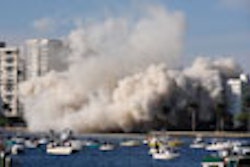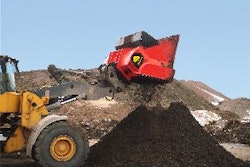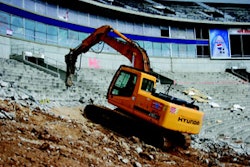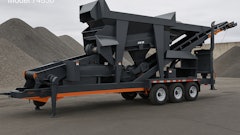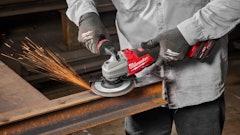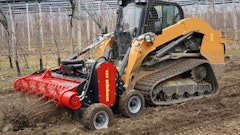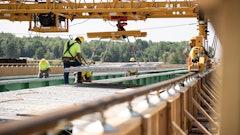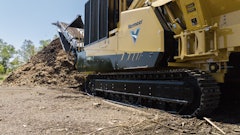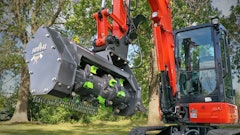Unless you’ve been living under a rock, it’s hard not to know about the worst oil spill in U.S. history. The Deepwater Horizon oil rig, owned by petroleum giant BP, exploded in April 2010 and spewed nearly five million barrels of oil into the Gulf of Mexico before it was temporarily capped in July. What you may not know is the story behind the story.
Ricky Myers of Rhino Construction had no way of knowing his work as a demolition contractor or the relationships he had formed across the Southeast during clean-up efforts after Hurricane Katrina would be the two dots that would connect him to two of the largest civil construction companies in Mississippi, T.L. Wallace and Eutaw Construction, to help spearhead the effort to clean up 26 miles of Gulf Coast beaches.
“While Rhino didn’t have firsthand experience in cleaning up after such a massive oil disaster, we do handle hazardous materials daily and we were on the front line cleaning up after the country’s worst natural disaster. That certainly gave Wallace and Eutaw the confidence they needed to know that we’d get the job done,” said Myers. “The number of people we had to hire didn’t scare me because I’ve been in the staffing business before,” said Myers. “But it was certainly hard to imagine then that at one point I would have as many as 650 workers on the ground cleaning tarballs off the beaches.”
Myers’s first step was to hire consultants from Green Works Environmental Services of California to help with a strategy and the training of hundreds of employees. Green Works has previous experience in handling oil spills. Besides physical capabilities, each employee was required to go through a 40-hour Occupational Safety and Health Administration (OSHA) training on handling hazardous materials.
Part of Myers’s strategy was to find logistics specialists who are trained to move and manage large groups of people. The military arena proved to be a great place to find that talent.
Myers hired four retired National Guard soldiers from Camp Shelby, near Hattiesburg, Miss., who are specialists in troop movement, to help set up staging areas and facilities to manage the hundreds of employees.
“Management and time recording for 650 people every single day can be a nightmare,” Myers said. Between coordinating with the catering company [hired by BP] on nearly 2,000 meals a day for hundreds of workers and having enough bottled water for all of the crews each day, Myers needed a team to coordinate a master plan to make it all run smoothly. “With the former military professionals I hired, we are able to have the workers checked in and on the bus in 45 minutes, ready to get to work,” said Myers.
Rhino’s vast experience in the demolition business not only provided the resources needed to create a staging area, but also helped to make the project more environmentally friendly.
“We recycled 20,000 tons of crushed concrete from some of our previous demolition projects and used it as the base for the laydown yard, which houses equipment and vehicles, as well as roadways,” said Myers. “We wanted this effort to be as green as possible.”
Myers and Rhino Construction got to work hiring project managers, administrative support, recovery technicians and heavy equipment operators. Ninety percent of all workers are local to the Gulf Coast and many of them were affected by the oil spill, including shrimp factory workers and restaurant employees.
“We are talking about people who were pretty much unemployable and now they are making $14 an hour,” said Myers. “We did a great thing for the economy and for the otherwise unemployable.”
Rhino’s crews, which work in 12-hour shifts, are responsible for the beaches from Bay St. Louis to Ocean Springs. Crews are now also handing clean-up efforts on the barrier islands including Horn, Petit Bois, Cat and Ship Islands.
Crews wearing safety equipment, such as glasses, reflective vests and boots, use tools to scoop up tarballs with as little sand as possible. Recovery technicians, though, found some of the tools to be very inefficient, so they got creative and made their own.
“Our foremen and recovery technicians developed several handling strategies and equipment to handle the oil with the least intrusion,” said Myers. “We wanted to leave as much sand as possible, and the five different things we were given to work with don’t work. We’re talking as low-tech as slotted spoons with handles to pick up tarballs.”
Once the tarballs are collected, crews safely transport them to landfills. Myers says his crews could be working through March or April of next year.
“We are going to be out there until we get it all cleaned up,” said Myers.




